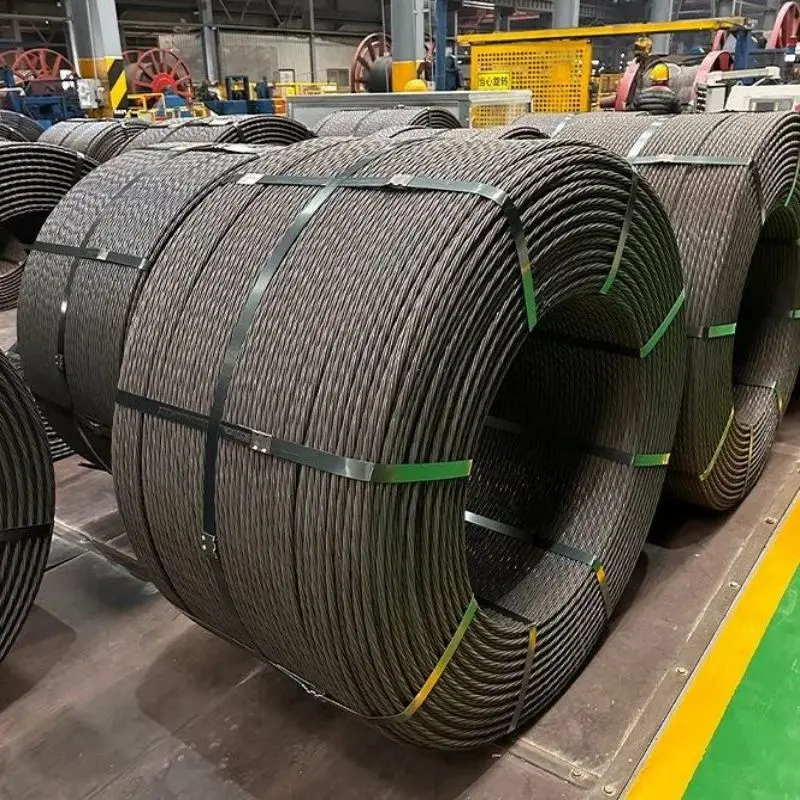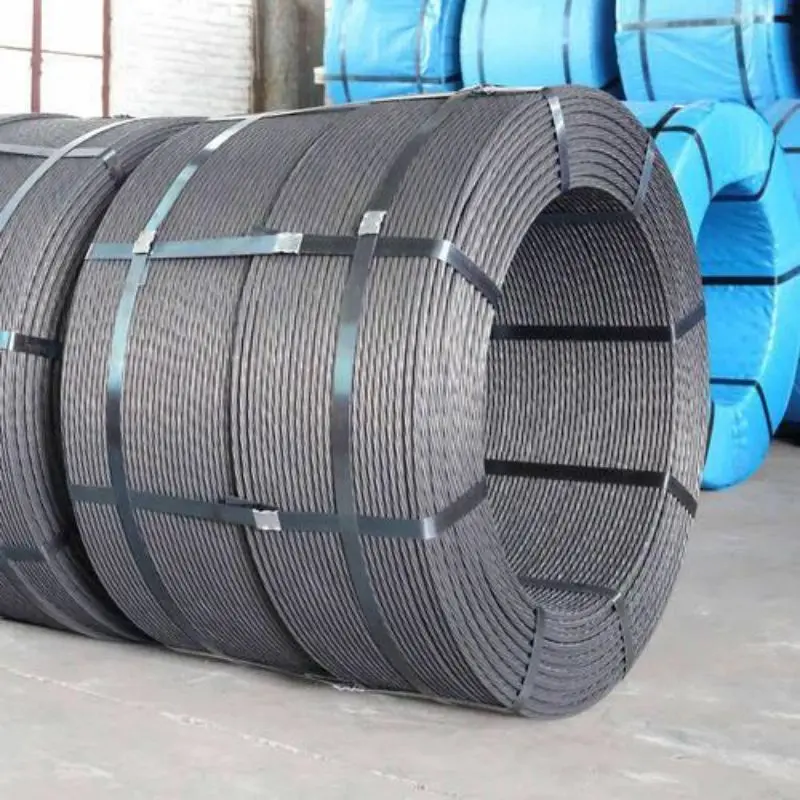Steel strand classification and use
Steel products made by twisting multiple Steel Wires are called steel strands. Steel strands are often used as load-bearing cables, tension wires, reinforcing cores, prestressing materials, blocking cables, ground wires, etc. and are widely used in various engineering fields such as bridges, electricity, water conservancy, construction, and road fences.


Steel strand is an engineering structural material required for the construction of highways, railways, bridges, high-rise buildings, and large venues. After surface treatment, high carbon steel wire rods are cold drawn into steel wires. Depending on the structure of the steel strand, a certain number of steel wires are twisted into strands and stabilized through stress relief treatment. To improve durability, wires can be coated with metal or non-metal coatings such as galvanizing or epoxy resin coating. In order to improve the grip with concrete, there may also be cutting marks on the surface. After being twisted, the pulled prestressed steel strand undergoes a mold compression process, resulting in a tighter structure and a surface that is more suitable for anchor rod grip.
The types and uses of steel strands are divided into galvanized steel strands, prestressed concrete steel strands, and aluminum strands according to the different types of steel strands produced.
1、 Classification of Steel Strands
Steel strands can be classified in various ways such as structure, coating material, purpose, and material characteristics. The commonly used classification method is based on structure, including prestressed steel strands, galvanized steel strands, and non bonded steel strands.
2、 Manufacturing process of steel strand
The production and manufacturing process of steel strands is divided into three parts:
The first part is single wire manufacturing, usually using raw materials such as stainless steel Wire Rods, high carbon steel or low carbon steel wire rods for cold drawing processing as needed to obtain corresponding specifications of single wires. If coating is required, the single wires are then coated.
The second part is the production of stranded wires, which are twisted into steel strands of corresponding specifications using a twisting machine. The prestressed steel strands also need to be stabilized after forming.
The third part is packaging and forming. In order to facilitate transportation and use, it is usually packaged in two forms: shaftless rolls and I-wheels before leaving the factory
The specifications and parameters of steel strands include the following aspects:
1. Specifications and models: Common ones include 1 × 3, 1 × 7, 1 × 19, 6 × 19, 6 × 37, 6 × 61, etc. For example, "1 × 7-15.2-1860" represents a steel strand made up of 7 wires with a diameter of 5mm twisted together, with a diameter of 15.2mm and a tensile strength of 1860Mpa.
2. Diameter: Standard diameters include 9.3mm, 11.1mm, 12.5mm, 15.7mm, 18mm, etc., as well as special models such as 3.0mm, 3.2mm, 3.6mm, etc.
3. Number of steel wires: This parameter is usually between 1 and 37, such as 1 × 7, 1 × 19, 6 × 19, etc.
4. Tensile strength: Common tensile strength standards include 1860Mpa, 1720Mpa, 1770Mpa, 1960Mpa, 2000Mpa, 2100Mpa, etc.
5. Weight: Expressed in weight per kilometer, for example 4.4-150kN (this value may vary depending on different types of steel strands).
6. Application areas: Widely used in multiple fields such as electrified railways, construction, road and bridge construction, port loading and unloading.
7. Steel strand length: Typically ranging from 100m to 2000m in length.
Steel strands mainly include the following types:
Prestressed steel strand. This type of steel strand is mainly used in large buildings such as bridges, highways, railways, and other fields. It improves the load-bearing capacity and durability of the structure by applying prestress. Pre stressed steel strands are twisted from multiple steel wires and have high strength and good extensibility.
Parallel steel strands. Parallel steel strands are composed of multiple steel wires arranged in parallel and have a galvanized protective treatment on the surface. It is commonly used for non prestressed tensile components in overhead transmission lines, optical cable composite lines, and prestressed concrete structures. The parallel steel strand structure is compact, with good load-bearing capacity and corrosion resistance.
Stranded steel strand. Stranded steel strands are made by twisting several steel wires, which undergo heat treatment and galvanizing processes, and have high corrosion resistance and tensile strength. It is widely used in shipbuilding, lifting equipment, construction sites and other fields, undertaking important carrying tasks.
Other special purpose steel strands. In addition to the common types of steel strands mentioned above, there are also some special purpose steel strands, such as mining steel strands and prestressed concrete steel strands. These steel strands have different performance characteristics and manufacturing processes according to specific application environments and requirements.
Steel strand is a wire rod made by twisting steel wires together through a certain process, which can be classified into various types according to different materials and applications. The types introduced above are the most common and widely used, each playing an important role in a specific field. The application of prestress enables steel strands to have higher stability and durability under load, while good anti-corrosion treatment ensures normal operation in various environments.















